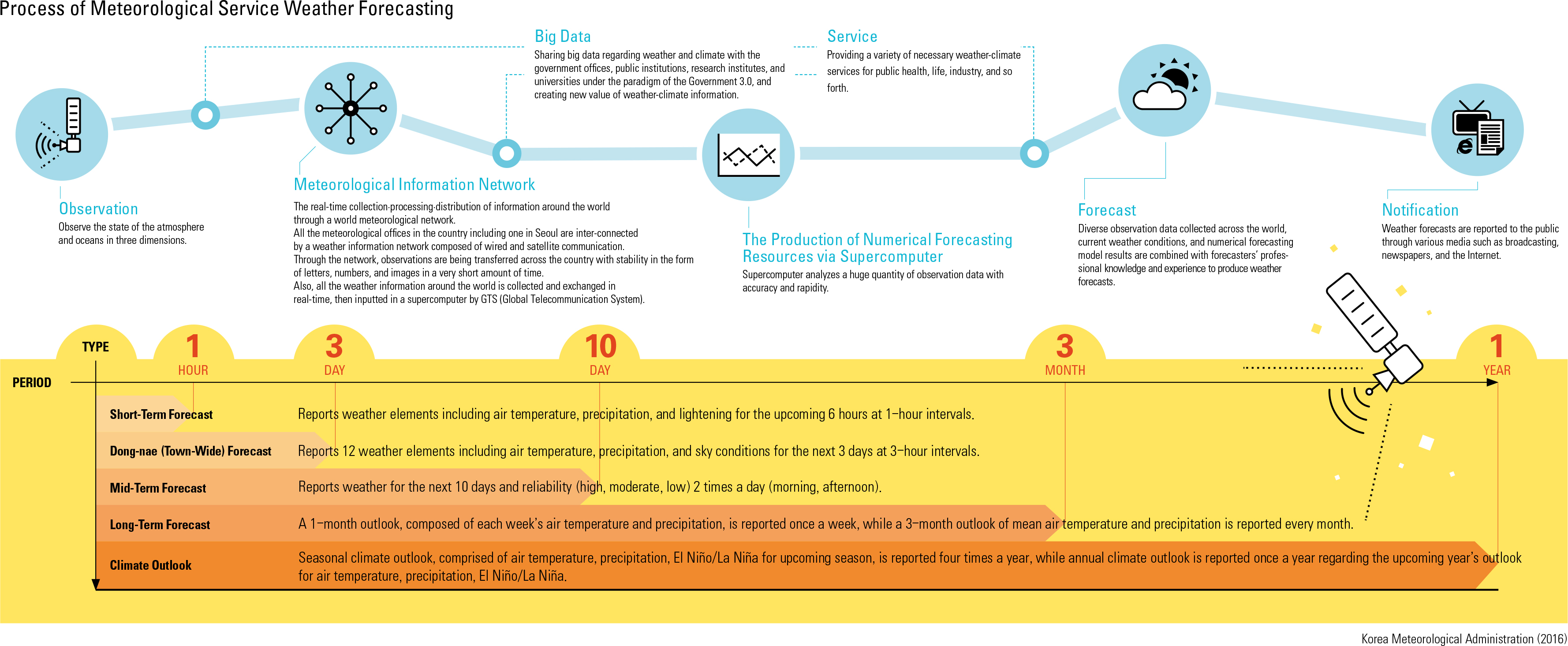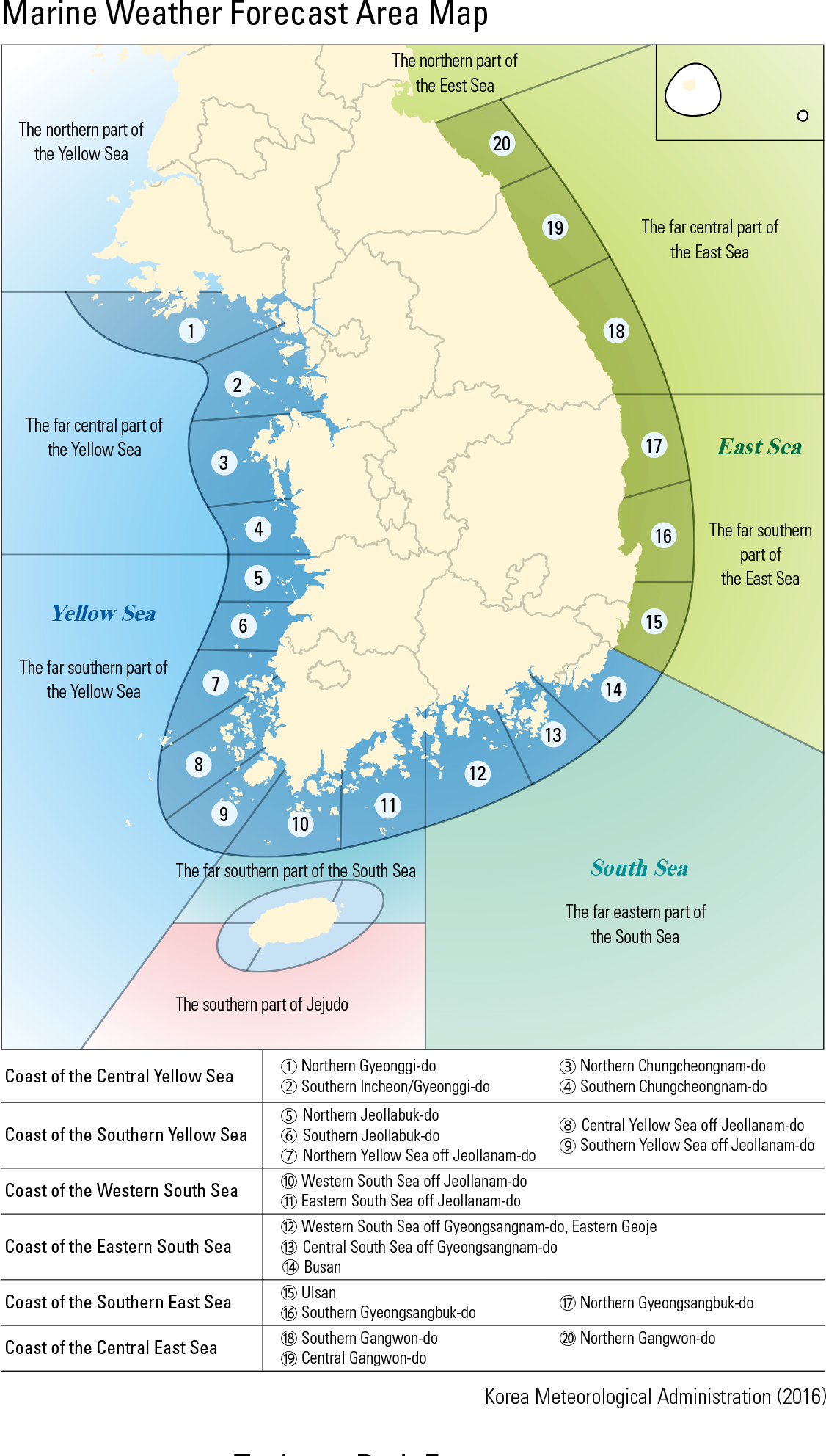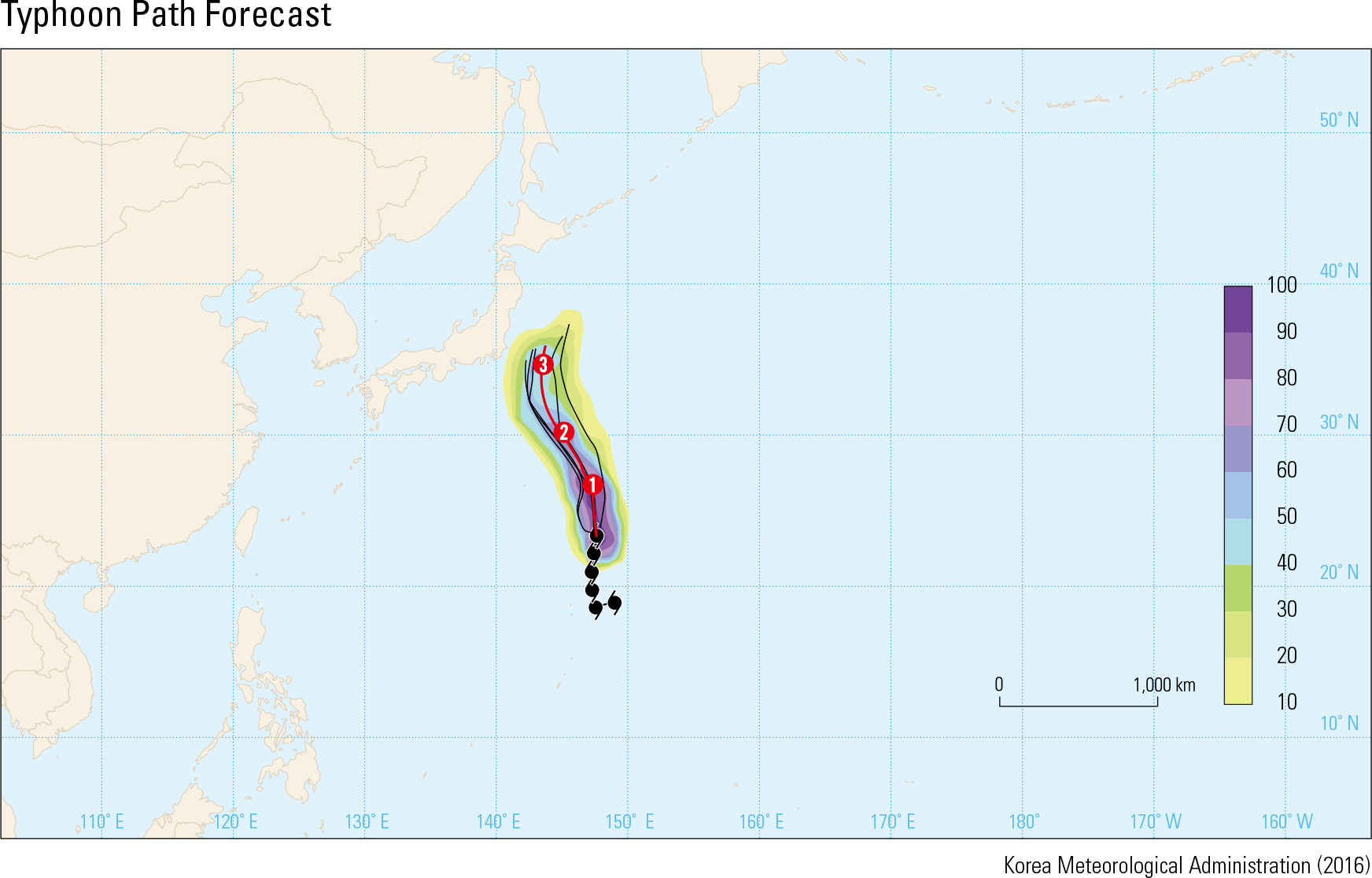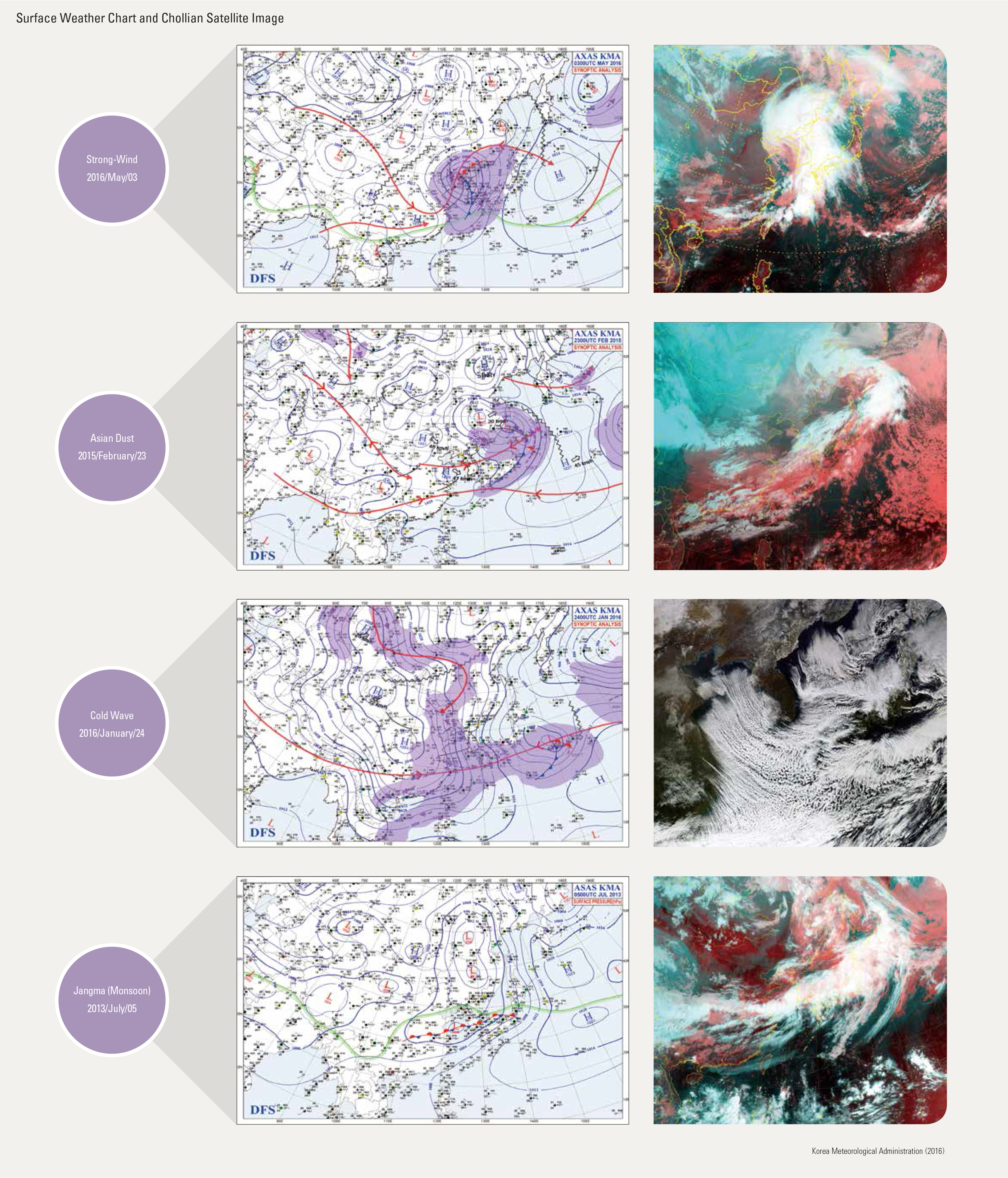English II
National weather data are collected in a central server of supercomputers and shared with mem- ber nations of the World Meteorological Orga- nization in real time. These data are assimilated for the production of various numerical models through the super computers. Then trained fore- casters with expertise and experience examine current atmospheric conditions based on the observations, and analyze the numerical weather prediction models comprehensively. Finally, fore- casters across the country consult and exchange opinions via videoconference to make to a final forecast decision. Area forecasts are provided on both a regional scale (12 overland areas and 14 marine areas) and local scale (about 3,500 towns). Special weather reports are issued as weath- er advisories for possible natural disasters. The report is issued as either a watch or a warning, depending on the risk level of the following 11 natural disasters: heavy rainfall, heavy snowfall, storm surge, tsunami, typhoon, strong winds, high seas, Asian dust, drought, cold surge, and heat wave. A preliminary weather advisory is issued ahead of a special weather report in order to help people to prepare for meteorological disasters.
page_2 |





